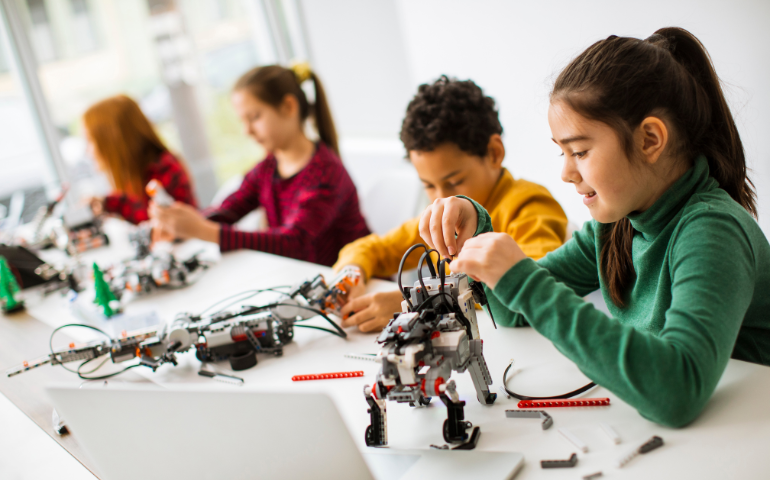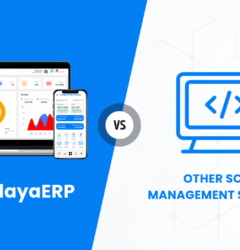28 Dec

In today’s rapidly evolving technological landscape, the demand for professionals with expertise in programming and robotics is at an all-time high.
As industries across the globe embrace digital transformation, the ability to understand and work with technology has become a prerequisite for success in the job market.
Recognizing this shift, schools are increasingly incorporating programming and robotics learning into their curricula to prepare students for future job opportunities.
The Changing Landscape of the Job Market
The job market is undergoing a significant transformation, driven by advancements in technology such as automation, artificial intelligence, and machine learning.
As a result, there is a growing demand for professionals who possess skills in programming, robotics, and other STEM (Science, Technology, Engineering, and Mathematics) fields.
These skills are not only valuable in traditional tech sectors but are also becoming increasingly relevant in industries such as healthcare, finance, manufacturing, and more.
According to a report by the World Economic Forum (WEF), the Fourth Industrial Revolution is expected to disrupt traditional industries and create new job opportunities in emerging fields such as artificial intelligence, robotics, and data science (WEF, 2020).
Another report by McKinsey Global Institute states that automation could potentially increase global productivity growth by 0.8% to 1.4% annually (McKinsey, 2019).
The Importance of Programming and Robotics Learning
Let’s discuss a few benefits of introducing programming and robotics at the school and how it can shape the future of the workforce.
Building a Foundation for Future Careers
Introducing programming and robotics learning at the school level lays the foundation for future careers in technology-related fields.
By familiarizing students with coding languages, software development processes, and robotics principles, schools can equip them with the foundational knowledge and skills needed to pursue careers in areas such as software engineering, data analysis, robotics engineering, and beyond.
Fostering Problem-Solving and Critical Thinking Skills
Programming and robotics learning helps students develop essential skills such as critical thinking, problem-solving, and creativity.
As students engage in coding projects and robotics challenges, they learn to approach problems analytically, break them down into smaller parts, and develop systematic solutions.
These skills are not only essential for success in technology-related careers but are also valuable in a wide range of professional settings.
Encouraging Creativity and Innovation
Programming and robotics learning foster creativity and innovation by encouraging students to think creatively and develop solutions to real-world problems.
Through hands-on projects and experiments, students learn to apply their knowledge in creative ways, explore new ideas, and innovate.
These skills are essential for driving technological advancements and staying ahead in a competitive job market.
Adapting to an Evolving Work Environment
The future of work is expected to be highly dynamic and fast-paced, with technology playing an increasingly central role.
Professionals will need to be adaptable, continuously learning, and comfortable working with new technologies.
By introducing programming and robotics learning at the school level, educators can help students develop a mindset of lifelong learning and adaptability that will serve them well in their future careers.
Addressing the Skills Gap
There is a growing concern about the skills gap in the job market, particularly in the tech industry. Many employers struggle to find candidates with the right technical skills to fill open positions.
As per the survey by ManpowerGroup, 69% of employers reported difficulty filling positions due to a lack of available talent.
By introducing programming and robotics learning at the school level, schools can help bridge this gap by producing a pipeline of talent with the skills needed to meet the demands of the future job market.
Preparing for the Future
The future of work is expected to be highly automated, with a greater emphasis on digital skills.
According to a report by the Institute for the Future (IFTF), 85% of the jobs that will exist in 2030 have not yet been invented (IFTF, 2017).
This underscores the importance of preparing students with the skills and knowledge needed to adapt to a rapidly changing job market.
Case Studies and Success Stories
Several schools and educational institutions have already embraced programming and robotics learning with remarkable success.
In US, the High Tech High School in New Jersey has integrated robotics into its curriculum, leading to increased student engagement and interest in STEM fields (Edutopia, 2018).
Similarly, the Coding for Kids program in Australia has seen positive outcomes in terms of student learning outcomes and interest in coding (Australian Government, 2020).
Conclusion
In conclusion, programming and robotics learning at the school level are essential for preparing students for future job opportunities in a rapidly evolving job market.
By introducing these concepts early in their education, schools can equip students with the skills and knowledge needed to succeed in the digital age.
With the demand for professionals with expertise in programming, robotics, and automation on the rise, it is crucial for schools to prioritize these areas in their curricula.
By investing in programming and robotics education, schools can empower students to become the next generation of innovators and leaders in the digital age.


Deep J. Bhuyan